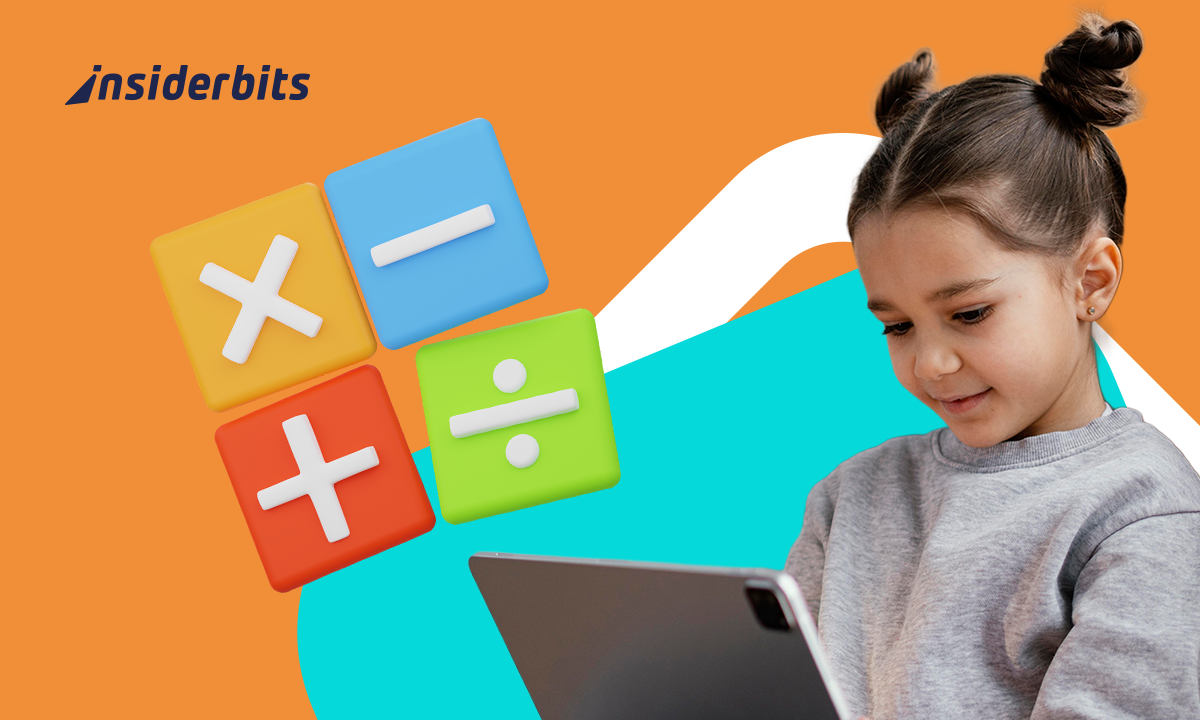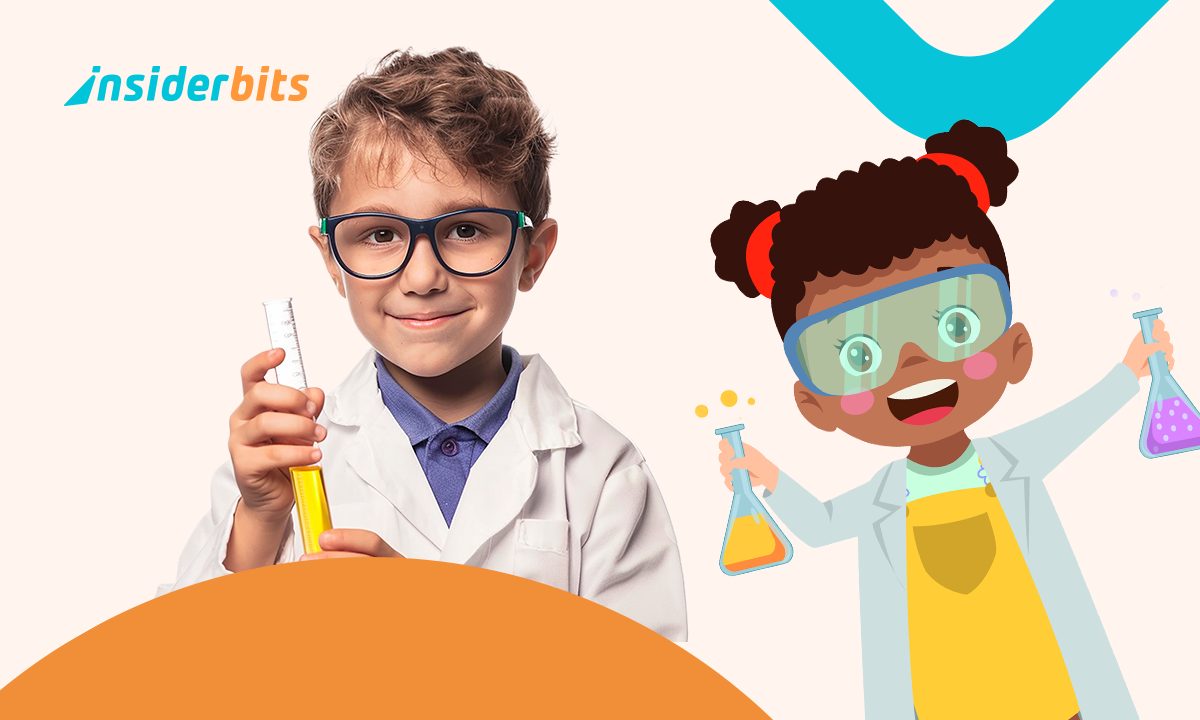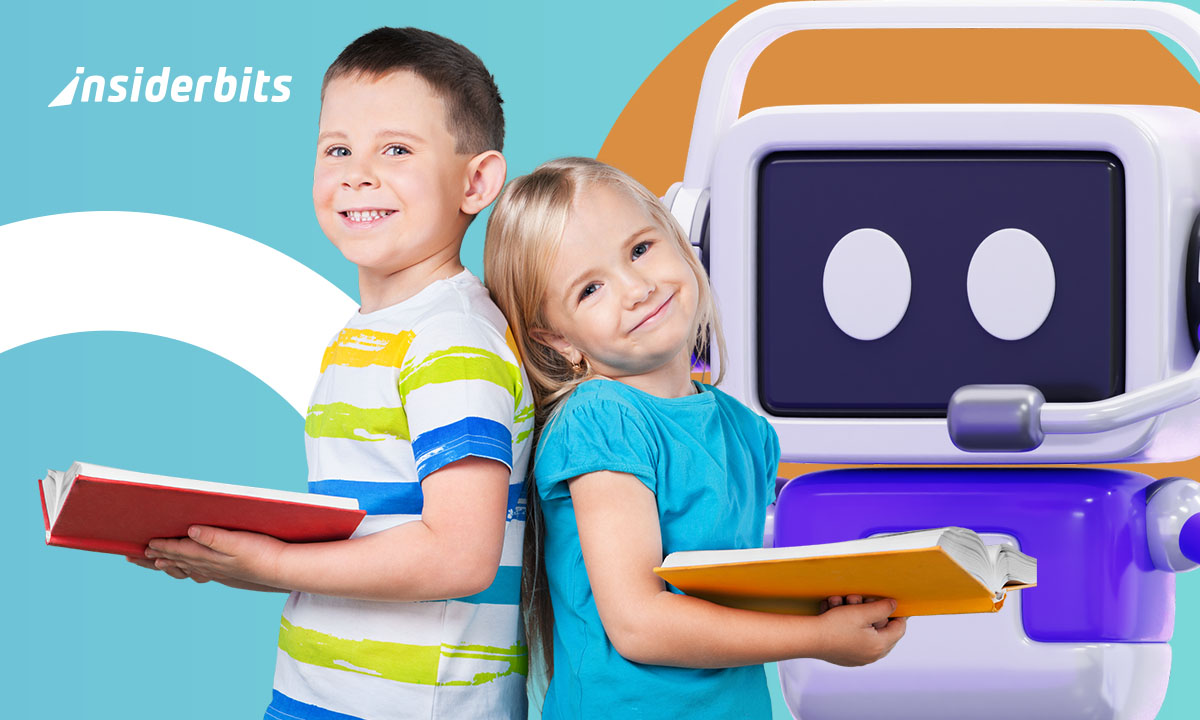Learning to read and write as an adult comes with real-life challenges, but plenty of adult literacy programs are built to meet people exactly where they are.
From free mobile tools to local in-person support, these programs respect time, privacy, and lived experience, making learning feel more like progress than pressure or shame.
This guide by Insiderbits was created to inspire learners, families, and educators. Keep reading and uncover what actually works when literacy support is done right.
Correlato: Applicazioni per l'alfabetizzazione: potenziare le abilità di lettura e scrittura
What are effective adult literacy programs
Learning as an adult means navigating tight schedules, limited resources, and deep-rooted fears. But some platforms are making reading and writing feel accessible.
These tools focus on real needs, like understanding work forms or helping with homework, using relatable content, visuals, and simple guidance to build confidence one word at a time.
Language Guide
| Prezzi: | Gratuito. |
| Disponibile per: | Web. |
Language Guide blends images with audio to support adult literacy programs in a low-pressure, natural way. Learners can listen, repeat, and build vocabulary without feeling overwhelmed.
The platform requires no signup or payment. It’s clean, easy to navigate, and works on nearly any device. Themed word groups help learners connect what they see to real-life use.
Native speaker pronunciation paired with everyday content allows learners to grasp how words truly sound, making it easier to speak with confidence and follow conversations.
Language Guide’s best features
- Interactive vocabulary building: clickable visuals paired with clear audio pronunciations make it easy for learners to memorize new words quickly and confidently;
- Real-life themed lessons: practical categories help users communicate effectively in daily situations, making language feel useful and immediately relevant;
- Free and easy access: no sign-up needed, completely cost-free, and compatible with various devices, enabling effortless learning anywhere, anytime, without barriers.
Learning Chocolate
| Prezzi: | Gratuito. |
| Disponibile per: | Web. |
Learning Chocolate helps learners connect words with meaning through images, sounds, and games. It’s a fun, low-pressure way to support progress inside effective adult literacy programs.
Each category includes visuals, audio, and games. These tools help adults recognize vocabulary, hear pronunciation clearly, and build confidence using common words.
The layout is simple and distraction-free. Users can repeat activities as needed, making it perfect for learners who need more time or feel anxious about formal learning environments.
Learning Chocolate’s best features
- Multi-sensory practice tools: combines images, audio, and text to help learners absorb vocabulary in ways that feel natural and easy to remember;
- Real-world vocabulary themes: lessons cover everyday topics like food, work, and family, helping learners focus on words they can actually use in daily life;
- Self-paced learning format: users can repeat exercises freely without pressure, creating a safe space to build confidence and reinforce language at their own speed.
USA Learns
| Prezzi: | Gratuito. |
| Disponibile per: | Web. |
USA Learns offers video-based lessons for adults who want to read, write, and speak English better. It’s one of the most practical and complete adult literacy programs available today.
The platform teaches through real-life scenes, like job interviews or doctor’s visits. Each lesson includes video, vocabulary, grammar, and practice questions to help build understanding.
It also includes U.S. citizenship courses and work skills training. Everything is free to access, and learners can track progress without needing help from a teacher or institution.
USA Learns’ best features
- Video lessons with real contexts: lessons simulate daily situations like shopping or interviews, helping learners connect language with actual experiences and needs;
- Structured learning: each course builds gradually, offering grammar, vocabulary, and quizzes designed to support long-term progress and confidence;
- Free access without registration: all content is open and cost-free, making it easy for anyone to start learning immediately, regardless of background or budget.
Handwriting Worksheet Maker
| Prezzi: | Gratuito. |
| Disponibile per: | Web. |
Handwriting Worksheet Maker offers printable sheets tailored for letters, words, or custom text. It’s a practical tool used inside successful adult literacy programs to strengthen writing skills.
Users can modify font styles, spacing, and content. This allows learners to adjust worksheets to their pace, whether they’re building fine motor skills or focusing on word structure.
Handwriting supports recognition and memory. For many adults beginning from scratch, tracing each word helps solidify learning and boosts confidence in reading fluency and communication.
Handwriting Worksheet Maker’s best features
- Fully customizable worksheets: users can choose words, letter styles, and layout settings to match each learner’s handwriting comfort and progress stage;
- Supports focus: repetition through writing helps improve concentration and letter recognition, strengthening essential skills for learning and retaining new information;
- Simple design with instant results: no login needed, just type and print. Great for classrooms, tutors, or families helping someone build writing confidence at home.
Additional learning options
Khan Academy offers structured reading and grammar lessons through short videos. Adults can study at their own pace, making it easier to fit learning into daily routines.
Coursera provides accessible courses that support adult literacy programs while opening doors to broader skills. Its guided format builds confidence for those returning to learning after a while.
Free local programs add a personal touch. Libraries and community centers often host classes with tutors, printed materials, and quiet spaces that help learners feel supported and seen.
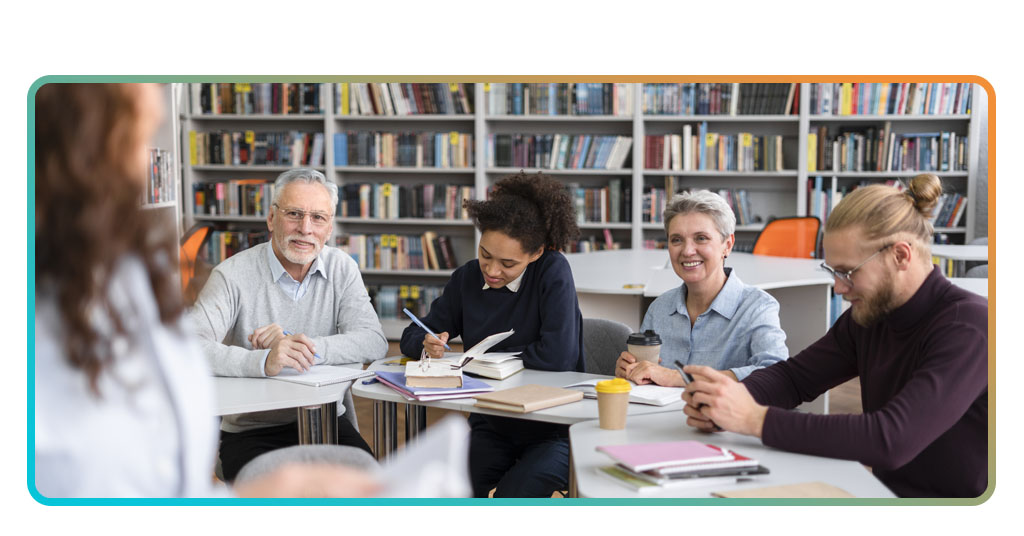
Free vs paid options: pros and cons
Some adults learn better with structure, others need more freedom. Both ways can work when reading or writing feels possible, with tools that match each person’s pace.
Free and paid platforms give different kinds of help. Some offer guidance, others flexibility. What matters is finding something that supports progress and fits into real-life challenges.
What you get for free
Free tools offer a way to begin without pressure. Many support adult literacy programs by removing sign-ups or fees, helping learners feel safe as they try something unfamiliar.
Most free resources include short videos, vocabulary games, and grammar practice. They’re built for independent use, which works well for adults balancing busy schedules.
A common drawback is the lack of structure or feedback. Without goals or guidance, some learners may lose motivation or find it hard to stay focused over time.
When it’s worth paying
Paid platforms usually include full courses with guided lessons, feedback, and certificates. This structure can help some adults stay focused, especially when learning feels unfamiliar.
Support from teachers or coaches adds confidence. These platforms align with adult literacy programs, offering space to ask questions and get help when independent study isn’t enough.
Not everyone needs that level of support, but for adults working toward job goals or faster results, paid tools can bring steady progress and more meaningful learning experiences.
The hybrid path
Mixing free and paid resources can balance flexibility with structure. It’s a practical way to improve learning without overloading someone new to reading or writing as an adult.
Start with videos or games, then add writing tools or lessons with feedback. Combining them allows support from both worlds and strengthens outcomes in adult literacy programs.
This path also helps families, teachers, and volunteers stretch resources. They can offer tools that match the learner’s pace while reserving a budget for what really needs investment.
Correlato: I migliori lettori elettronici che fanno venire voglia di leggere tutto il giorno
How interactive tools improve learning
Interactive tools make learning feel more real. Seeing pictures, hearing words, and clicking through lessons helps adults understand better, especially if reading hasn’t worked well before.
Sounds, images, and simple movements make it easier to remember things. These tools connect learning to real life, which helps adults feel more comfortable with new material.
Replaying videos or quizzes builds confidence over time. That kind of practice is useful inside adult literacy programs, where learners need time and space to grow without pressure.
Learning by seeing and doing
Watching someone write a word, then trying it, builds trust in the process. Interactive tools guide users gently while still letting them take control.
Simple actions like dragging a word to a picture or repeating a sentence out loud can turn passive learning into a real moment of progress.
Real-life scenarios that make sense
Adults need learning that connects with everyday life. Simulated situations like buying groceries or reading instructions make learning feel useful, not abstract or disconnected.
Interactive scenes showing real situations build vocabulary and comprehension. Learners feel more prepared to use language where it actually matters, in work tasks, or family routines.
The power of storytelling in adult literacy
Platforms that use characters or small narratives help adults relate emotionally, which improves memory and makes lessons feel more human in adult literacy programs.
Instead of dry drills, learners follow real people solving problems. This makes lessons less intimidating, more meaningful, and easier to remember beyond the learning session itself.
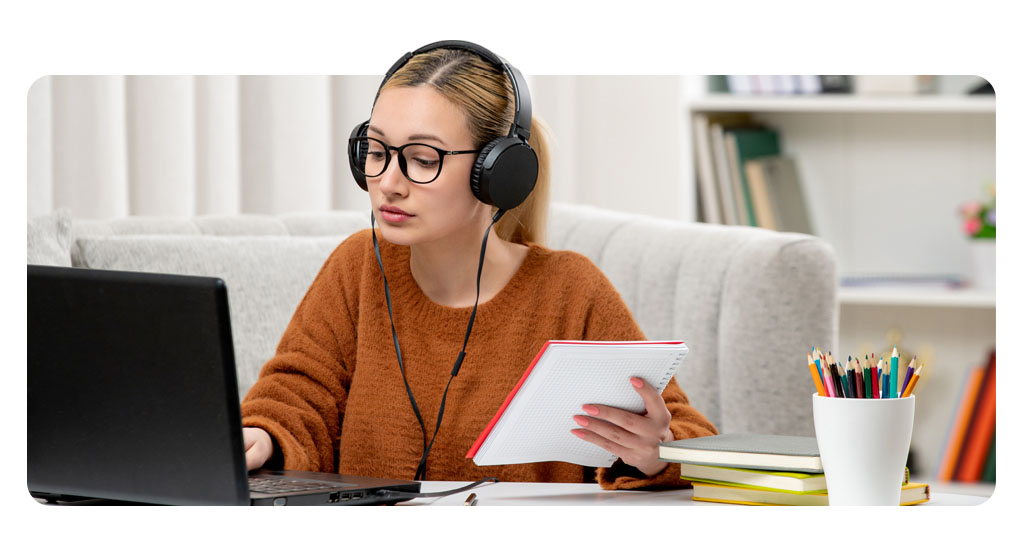
Tips for teachers running adult literacy classes
Helping adults learn to read or write means recognizing daily pressures. Many juggle jobs, care for family, and carry old school experiences that shaped their confidence.
Patience and flexibility go a long way. Listening, adjusting the pace, and celebrating progress can make learning feel supportive instead of stressful or discouraging for adult learners.
These small changes matter inside adult literacy programs, where understanding each person’s routine and mindset helps create a space that feels respectful and focused on real progress.
Building trust before teaching
Adults carry emotional weight when returning to learning. Many feel ashamed or anxious. The first step is making them feel safe, respected, and seen as capable people.
Trust grows through small things like learning their names, asking about goals, and being consistent. When learners feel secure, they take risks, ask questions, and start evolving.
Customizing lessons to daily life
Lessons feel useful when they connect with everyday tasks. Reading a recipe or filling out a form becomes more than practice, it becomes a tool for independence.
Instead of general grammar drills, focus on what learners face daily. That relevance keeps them motivated and shows how literacy can improve small moments in practical ways.
How families and volunteers can help
Learning doesn’t stop in class. Families and volunteers can reinforce what’s taught by helping with signs, labels, short texts, or casual reading together at home.
These helpers become quiet extensions of adult literacy programs by offering encouragement, reminders, and everyday opportunities to use what’s being learned.
Use what they already know and own
Phones, voice notes, grocery lists are everyday tools that can support learning. Build lessons around familiar objects to reduce pressure and help learners connect with the content faster.
Language is everywhere. Using daily routines to teach literacy makes learning feel achievable. It also builds confidence using tools learners already trust in their own environments.
Correlato: Revolutionizing How We Read: Apps for Audiobooks in 2025
Learning grows when support is real
Helping adults read and write changes more than skills. It builds confidence, independence, and new possibilities. Good tools and support make a lasting difference in someone’s everyday life.
Insiderbits put this guide together to spotlight real tools that support learning. Every platform and idea shared here plays a role in building stronger adult literacy programs today.
Curious minds deserve better resources. Keep browsing Insiderbits for more guides that simplify, support, and share what truly helps people grow one practical article at a time.

